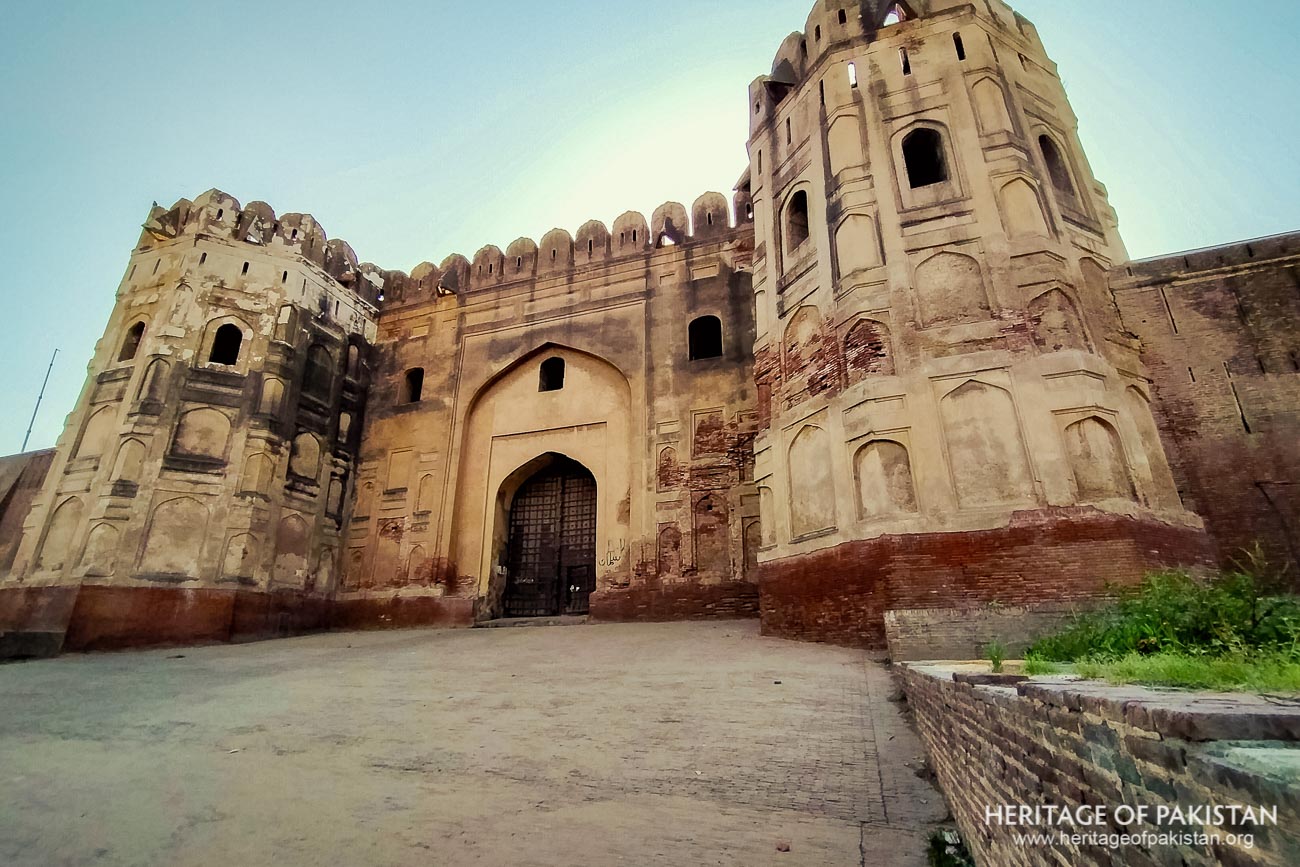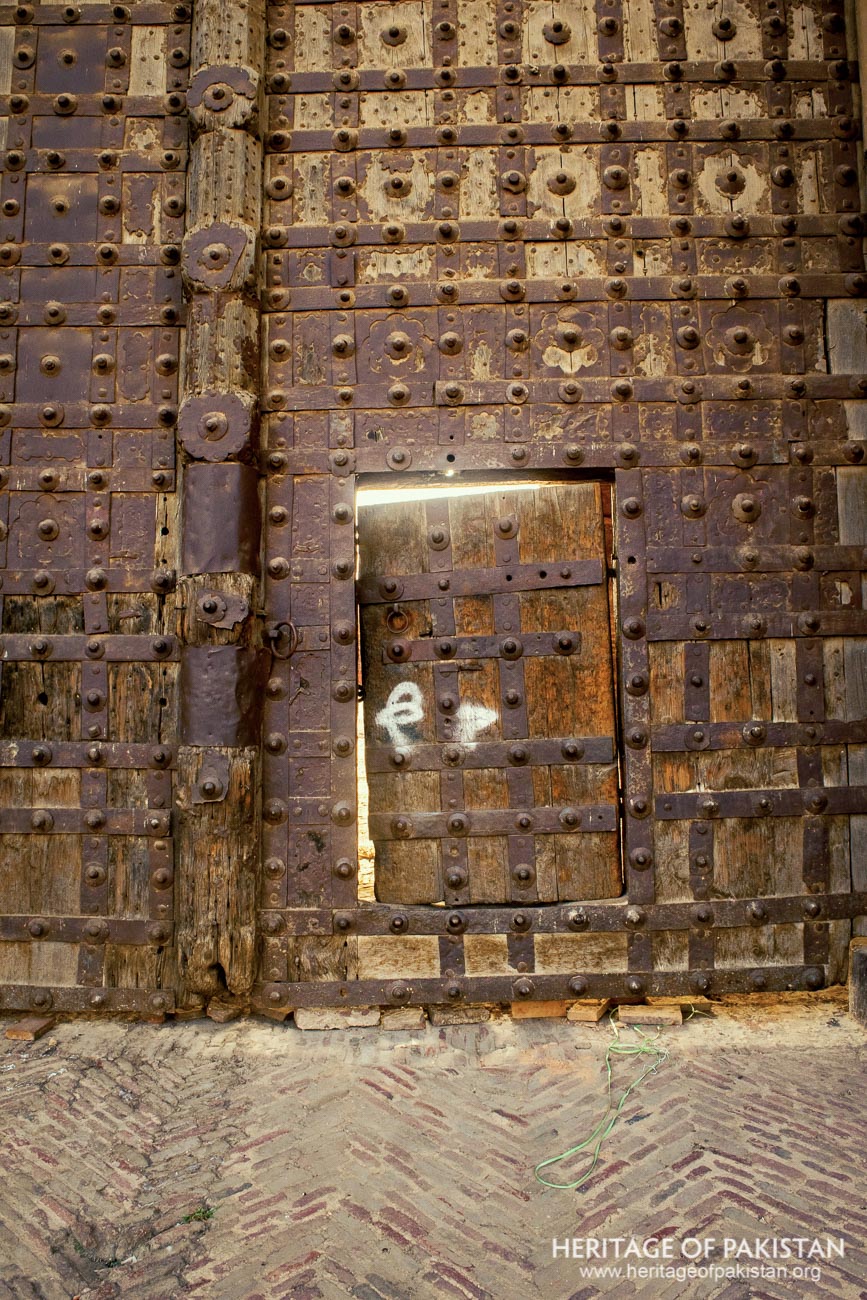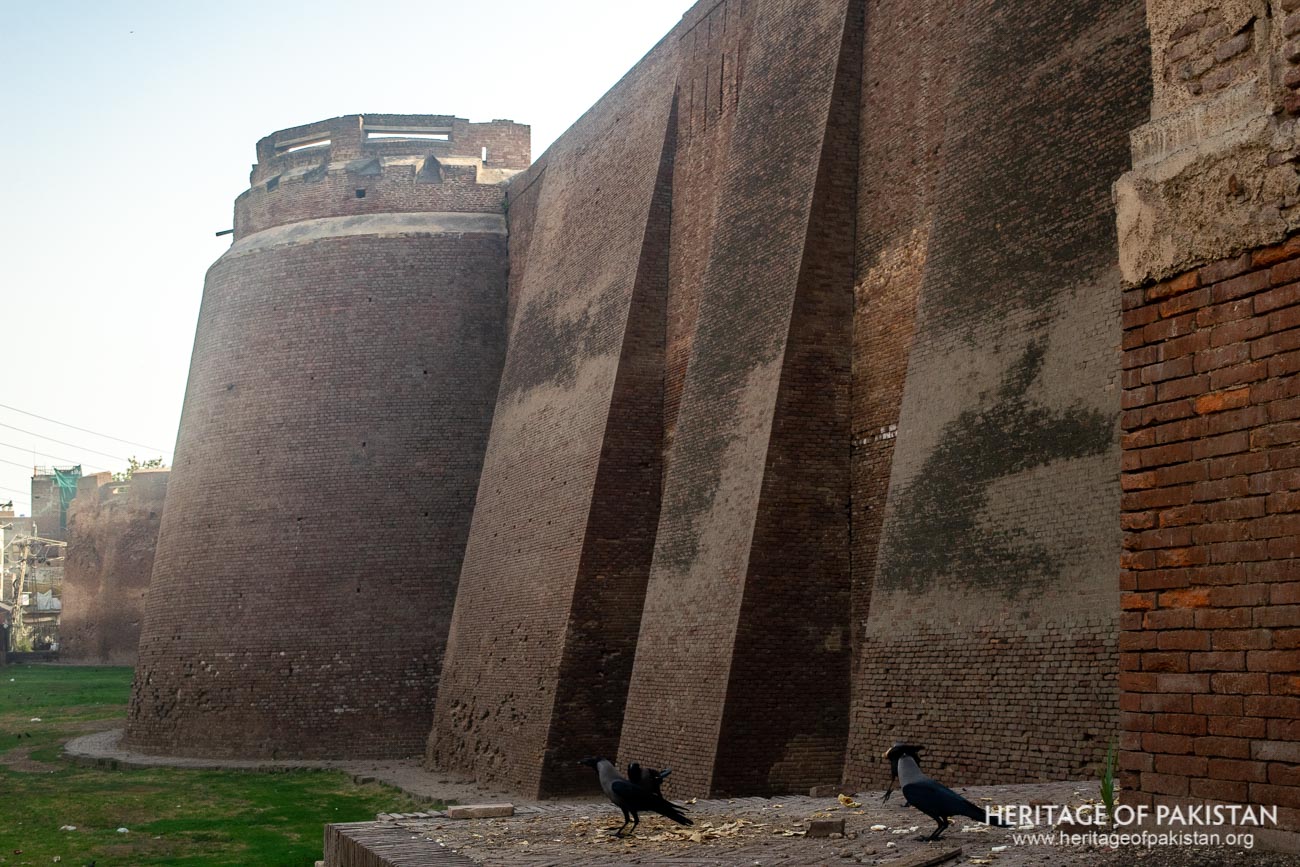Protected Under
Antiquities Act 1975
31°35'15.4"N 74°19'00.7"E
![]()
On the UNESCO World Heritage Site List
Antiquities Act 1975
The gate is named after the nearby mosque of Empress Maryam Zamani, built in 1614 AD
The Best Time to Visit Punjab Province is Year long as it has bearable Cold winters and Hot Summers. However, Summers can get really Hot and precautions are recommended during Daytime visits.


Masti Gate, also historically known as Masjidi Gate and Akbari Darwaza, is a significant architectural element of the Lahore Fort, situated on its southeastern side within the area known as Akbar’s Quadrangle. The gate was constructed in 1566 AD by the Mughal Emperor Akbar as part of the early phase of fort development. The fort itself, built using red Lahori bricks, dates to the same year and marks a foundational period in the architectural evolution of Lahore Fort under Akbar’s rule.
Masjidi Gate, at one point, served as the main entrance to the Lahore Fort. It is considered one of the oldest surviving structures of the fort and is closely associated with Akbar’s original layout, which, according to historian Nazir Ahmed Chaudhry, included only two main gates. These were the eastern gate, known today as Masjidi Gate, and a western gate, which was later replaced by Emperor Aurangzeb with the Alamgiri Gate. Another notable entryway, the Shah Burj Gate, located on the west, leads to the Elephant Path (Hathi Pol), constructed during Jahangir’s reign with decorative work completed in Shah Jahan’s time.
The name "Masti Gate" is believed to have evolved from the word "Masjidi" or the regional variation "Masiti," referencing its proximity to the Mosque of Maryam Zamani. This mosque, built in 1614 AD by Empress Maryam Zamani, the wife of Akbar and mother of Jahangir, is located directly opposite the gate and remains standing to this day. Due to this spatial relationship, the gate was gradually referred to as Masjidi Gate.
There are two prevailing theories about the origin of the name "Masti Gate." The first links the name to the mosque nearby, suggesting a linguistic transformation over time. The second attributes the name to a royal guard, Masti Baloch, who is said to have dutifully protected the gate into his old age. According to tradition, in recognition of his service, the gate was officially named after him by royal decree. Some historians also speculate that there may once have been a garden connecting the gate to the mosque, although this remains unverified.
Masti Gate remains a critical feature in understanding the early Mughal period architecture and spatial planning of the Lahore Fort. Its historical relevance is deeply connected with the architectural, cultural, and urban developments of the Mughal era in the region.

Masti or Masjidi Gate, Lahore Fort


Door details of Masti Gate, Lahore Fort
Masti Gate, also known as Masjidi Gate, is located on the eastern wall of the Lahore Fort, east of the Diwan-e-Aam structure. It stands within the area known as Akbar’s Quadrangle, a vast court occupying the southeastern portion of the fort. This part of the fort was extensively altered during subsequent Mughal reigns. Many original structures were removed by Emperor Jahangir for the construction of his Daulat Khana-e-Khas-o-Aam, and later by Emperor Shah Jahan to build the large pillared hall of the Diwan-e-Aam.
The gate is a massive structure built with a distinctly military character. It consists of a central wooden gate flanked on either side by two massive semi-octagonal bastions. These bastions are symmetrically balanced and are divided into multiple panels with recessed niches and pointed arches. They taper slightly towards the top and are crowned with battlements featuring merlons and crenellations. Defensive features such as machicolations are spaced at intervals along the parapet, further highlighting its strategic purpose.
A ramp, paved with bricks, leads up to the gate. The gate itself is made of heavy timber, reinforced with iron cladding and large spiked metal studs. These reinforcements were designed to prevent intrusion by war elephants. Additional protection is provided by a smaller pedestrian door integrated into the main gate. Floral motifs are visible in the ironwork, though the decorative elements remain subdued.

The architectural detailing on the gate’s external elevation includes an arched niche framing a smaller arched entryway. The spandrels of the arch are simple and undecorated. The pishtaq, while not formally defined, features recessed panels and arched niches. The western face of the gate, which opens into the fort interior, includes proportionate divisions marked by recessed arched niches. An iwan-style arched gateway serves as the primary entrance, and above it is a projecting jharoka or balcony.
The upper storey of the gate consists of five compartments. Although utilitarian in design, these upper sections contribute to the overall defensive architecture. In comparison to the Alamgiri Gate, Masti Gate appears more functional and military in character. While the Alamgiri Gate features more elaborate decorative elements such as fluted bastions with floral petal bases and a domed crown, Masti Gate reflects an earlier and more pragmatic Mughal architectural approach.


Discover the Masti Gate image gallery and immerse yourself in photographs

All Photographs by Syed Noor Hussain and Sania Azhar.
All Rights Reserved. Photos may be used for Non-Commercial, Educational, Artistic, Research, Non-Profit & Academic purposes.
Commercial uses require licensing agreement.


Add a review